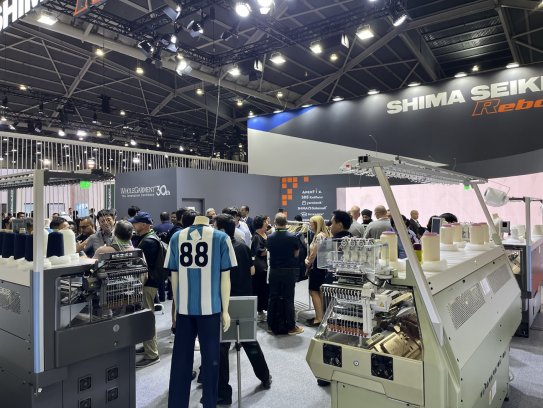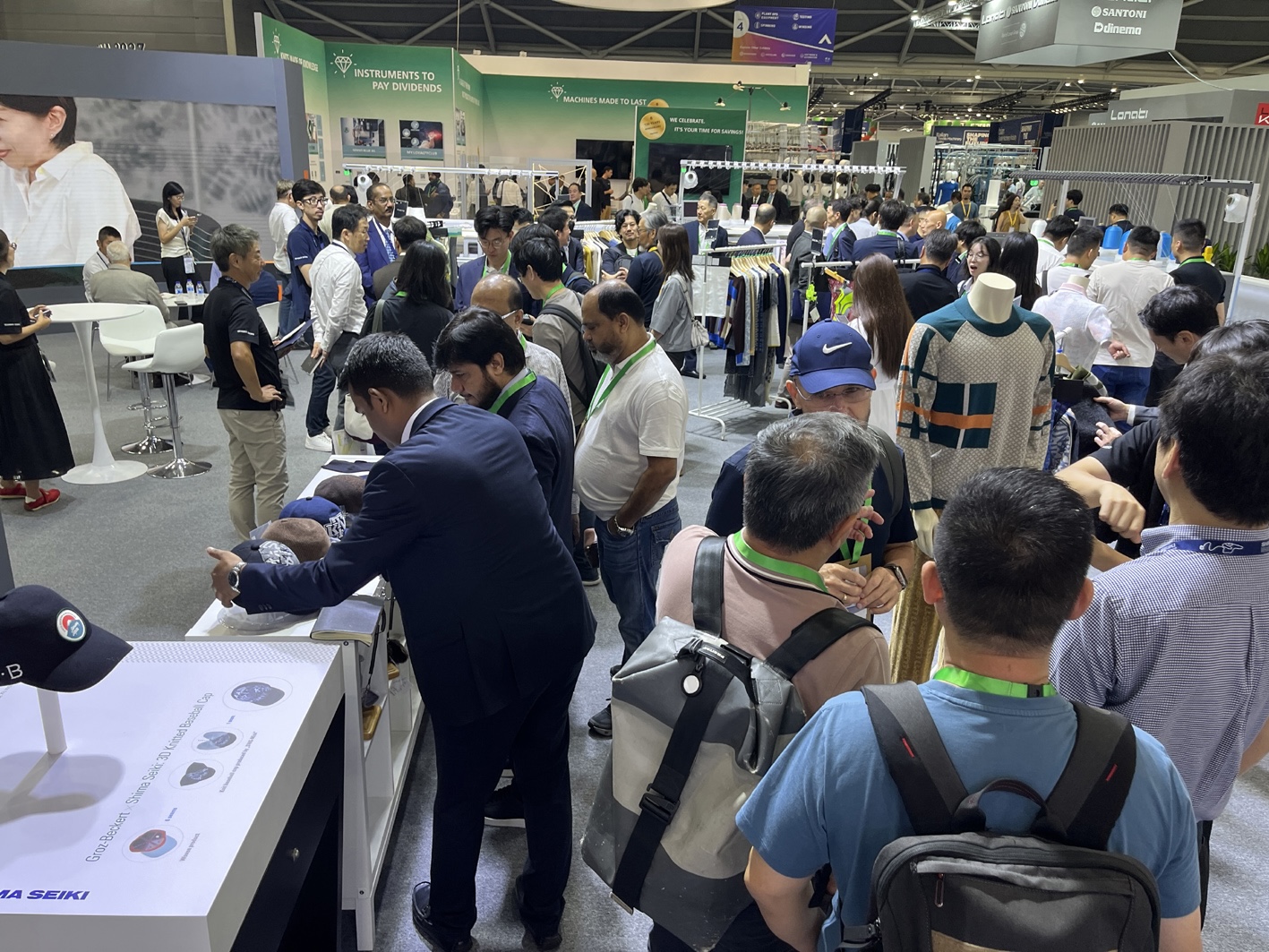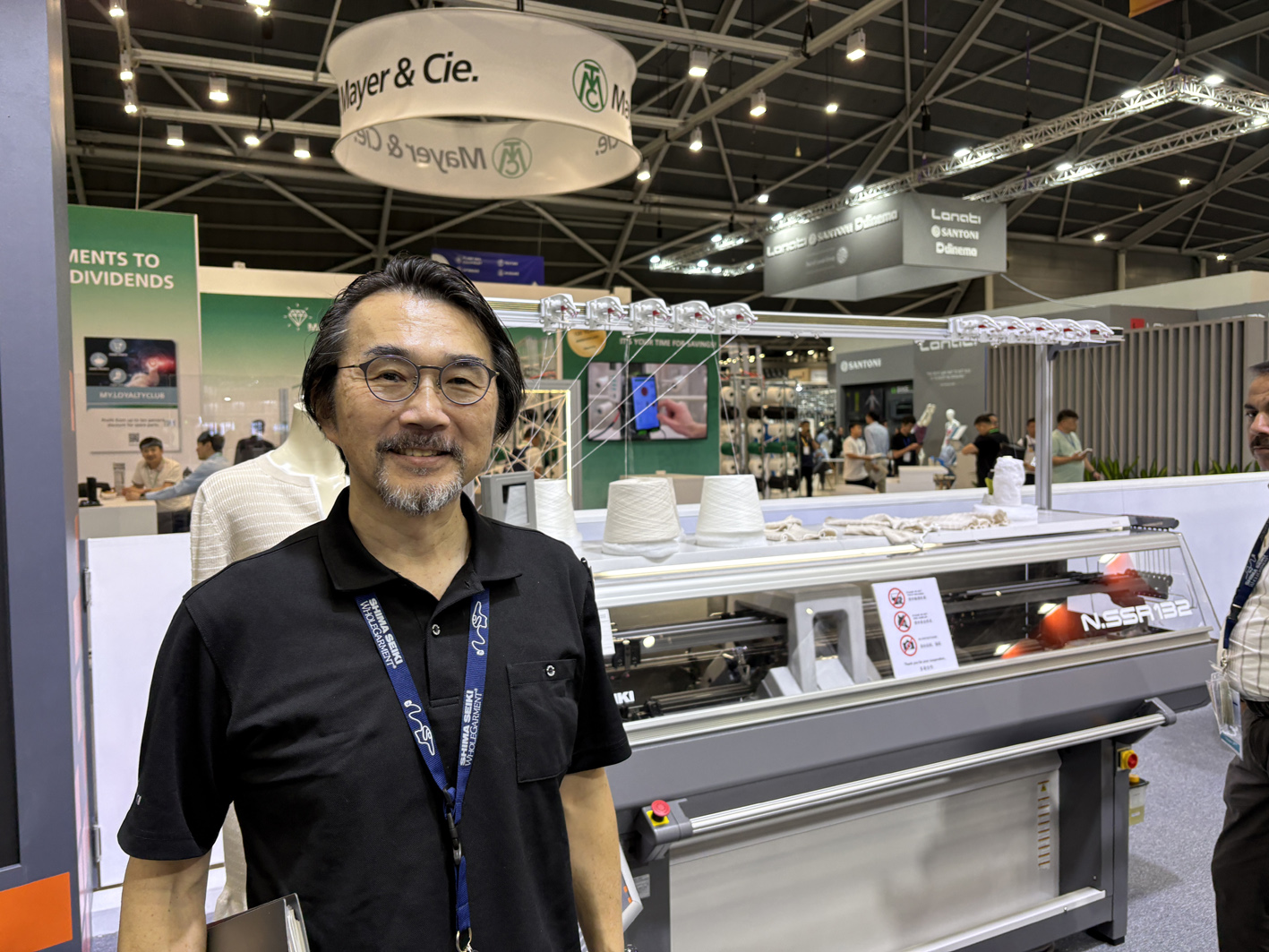
Glenguard announces sales team changes
Opinion


Thirty years on, Shima’s Seiki’s WHOLEGARMENT technology is now pre-programmed for success.

18th November 2025
Adrian Wilson
|
Singapore
Shima Seiki launched its WHOLEGARMENT technology at the ITMA textile machinery show held in Milan, Italy, in 1995, and at ITMA Asia + CITME 2025 in Singapore showcased the fifth generation of this technology – the SWG-XR.
At the show, the company brought together machines, digital tools, applications and some 140 knitted samples across fashion, footwear, bags and accessories, under its ‘Reborn’ banner.
“Our recent showcases have signalled a fundamental shift,” said Shima Seiki’s media relations officer Masaki Karasuno in Singapore. “Where earlier generations focused on eliminating seams, improving gauge, extending patterning and boosting throughput, we have now framed WHOLEGARMENT – and flat knitting more broadly – as part of a digitally integrated supply-chain solution. The knitwear of the future is not just seamless, but data-rich.”
In Shima Seiki’s 2025 eco-system, design data now flows to virtual sampling via APEXFiz, yarn sourcing is digital via yarnbank, programming is streamlined via SDS KnitPaint-Online, the machines are optimised and garments leave the machine closer to finished than ever.

Audacious
Thirty years ago, the idea of knitwear produced in three dimensions without seams – eliminating the post-knitting linkage of pieces and much of the labour, time and material waste that came with it – was nothing short of audacious.
It was, however, based on a serious proposition involving the precision control of loop formation, yarn behaviour and machine choreography. This set the tone for three decades of steady, practical innovation in which software, mechanics and materials science have converged to make WHOLEGARMENT an industrial mainstay.
1995
The first generation, the SWG-V of 1995, worked with a conventional V-bed configuration and twin needles arranged in pairs to emulate four-bed behaviour. Shima’s DSCS digital stitch control, stitch presser, movable sinkers and integrated yarn gripper and cutter gave manufacturers a glimpse of a new quality baseline for shaped knitting of entire garments at scale. Repeatability, fit and fabric integrity would become the foundation of WHOLEGARMENT’s industrial credibility.
1999
Four years later came the second generation SWG-X with two major advances. Firstly, Shima’s SlideNeedle unlocked true all-needle knitting across four beds, transforming patterning range and stitch architecture. The platform’s new pulldown device meanwhile improved three-dimensional shaping while i-DSCS stabilised stitch formation at speed, even with difficult yarns. Together these advances made WHOLEGARMENT a viable alternative to fully fashioned and cut-and-sew. The expansion of techniques from six to twelve opened design vocabulary and the technology’s maturity was increasingly recognised by the industry.
2008
By 2008 the third generation MACH2X machine pushed throughput and fineness. The R2Carriage system shortened return times, split-stitch techniques removed empty courses when widening sleeves and i-DSCS+DTC enabled ultrafine gauges to be processed with the uniformity luxury brands demand. Special SlideNeedles with larger hooks allowed tighter pitch without compromising loop stability, making the combination of drape, surface and hand‐feel competitive with woven aesthetics while retaining knit comfort.

2015
Seven years later, in 2015, the MACH2XS refined the fabric‐forming toolkit again by replacing the fixed sinker with a spring-type movable sinker. This extended the range of structures and three‐dimensional fabrics that could be knitted with higher quality. The addition of a dual takedown allowed short‐sleeved items to be produced without waste, scutting time, cost and offcut volume. The compact 103-width variant, designed for tight spaces, hinted at a new retail logic – onfloor micro-factories for mass customisation and on-demand production.
2022
The fifth generation crystallised around 2022 with the latest SWG-XR platform. Shima has returned to the architectural clarity of the original four‐bed SWG-X and raised the benchmark with a lightweight four-system carriage that delivers higher productivity and a broader creative palette. Punch‐lace without cam changes, super-3D relief enabled by a renewed sinker system, and highly efficient intarsia with auto yarn carriers have expanded the designer’s reach while reducing handling steps for technicians. At the same time, SWG-XR embodies a more explicit sustainability brief – less waste in the first place, fewer process stages and a more direct path from yarn to finished garment. In other words, fewer variables, less inventory risk, more responsiveness.

2025
One of the most decisive aspects of WHOLEGARMENT in 2025, is not the hardware alone but the software environment that supports it. Shima Seiki’s system works on the principle that the entire garment is conceived, shaped, graded and structured in the digital domain before a single course of knitting begins. The machine itself does not improvise or adjust in response to an operator – it executes a fully pre-determined set of instructions. This is what makes WHOLEGARMENT production repeatable and scalable rather than artisanal.
The design process begins in APEXFiz, Shima’s virtual sampling environment. Here the garment is sketched and configured in three dimensions, not just in terms of silhouette but in the distribution of stretch, drape and surface texture across the body. APEXFiz simulates yarn behaviour, stitch density and shaping so the designer can visualise how the material will sit on the wearer before physical knitting takes place. This reduces the traditional cycle of making, judging, adjusting and remaking and also helps maintain colour and material accuracy because the yarn library integrates digital data direct from spinners through the yarnbank platform.
Structural logic
Once the look and feel are resolved, the garment moves into SDS-ONE APEX or its successor modules, where the structural logic of the piece is determined. Here the designer and technician work together to translate the form into stitch structures, needle transfers, takedown tensions and the precise motions required to shape the garment in three dimensions. This is the stage at which the garment is truly “authored” as a set of machine instructions rather than as a pattern to be cut and sewn later. Every widening, narrowing, pouch, dart, cuff and collar exists as code.
From there the programme is refined in KnitPaint or the subscription-based SDS KnitPaint-Online environment, which provides a comprehensive view of course-by-course behaviour, yarn feeds, carrier changes and any regions of intarsia or plated effects. This environment exists to remove ambiguity, ensuring that when the file is delivered to the machine, the machine has nothing to interpret. It follows its instructions exactly, knitting the garment in a continuous operation from start to finish with no manual shaping, linking or trimming beyond final finishing.
“This is why WHOLEGARMENT machines can be described as operating entirely on pre-programmed information,” said Karasuno. “The operator’s role is to prepare the yarn, maintain calibration and manage production flow, not to intervene in the garment itself. The intelligence sits in the software and the data model, not in post-process workmanship. The garment is therefore the direct output of a digital file, which is what allows WHOLEGARMENT to support short runs, size variation, local production and rapid garment production without sacrificing consistency.”

Business intelligence for the fibre, textiles and apparel industries: technologies, innovations, markets, investments, trade policy, sourcing, strategy...
Find out more